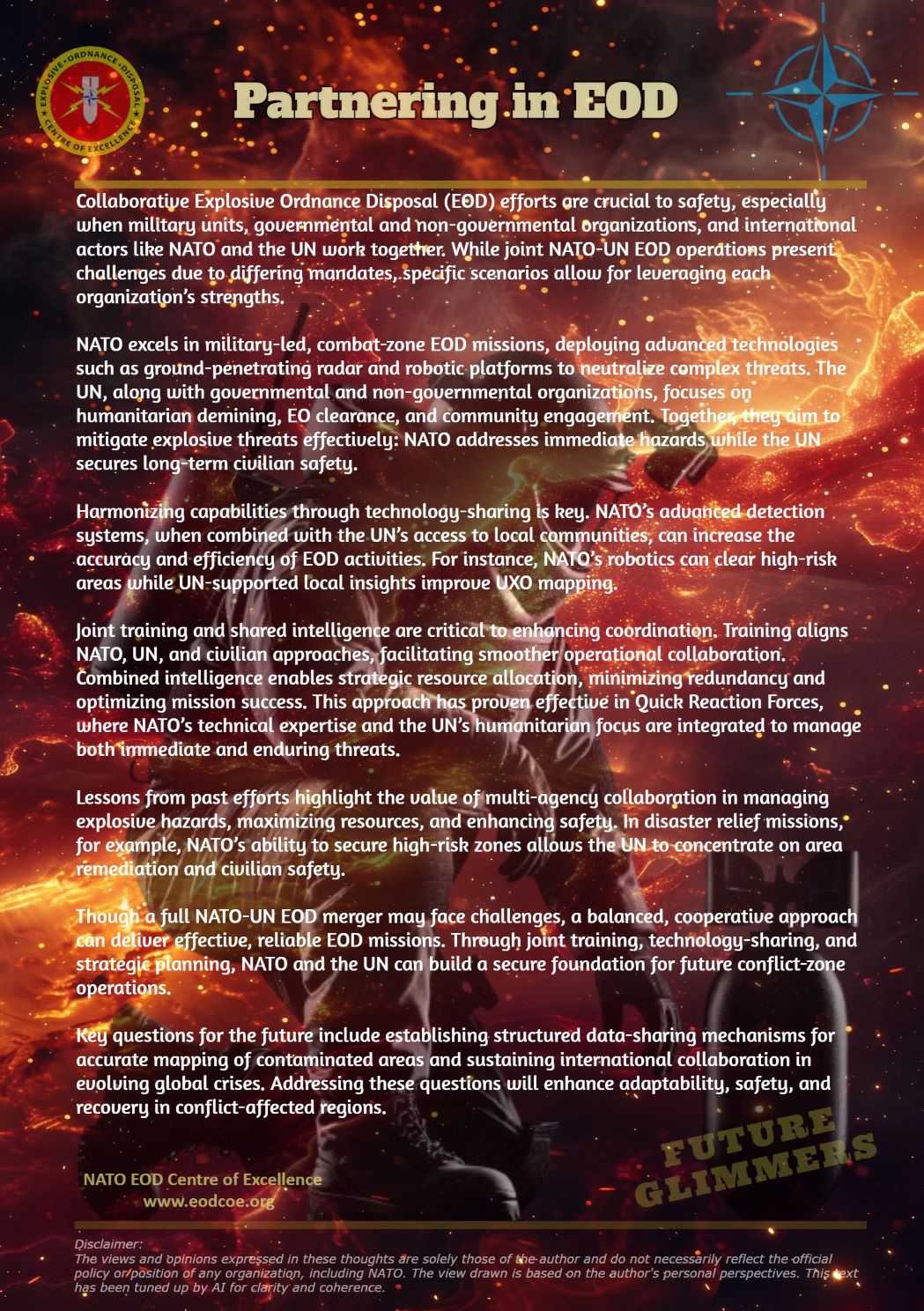
Partnering in EOD
Collaborative Explosive Ordnance Disposal (EOD) efforts are crucial to safety, especially when military units, governmental and non-governmental organizations, and international actors like NATO and the UN work together. While joint NATO-UN EOD operations present challenges due to differing mandates, specific scenarios allow for leveraging each organization’s strengths.
NATO excels in military-led, combat-zone EOD missions, deploying advanced technologies such as ground-penetrating radar and robotic platforms to neutralize complex threats. The UN, along with governmental and non-governmental organizations, focuses on humanitarian demining, EO clearance, and community engagement. Together, they aim to mitigate explosive threats effectively: NATO addresses immediate hazards while the UN secures long-term civilian safety.
Harmonizing capabilities through technology-sharing is key. NATO’s advanced detection systems, when combined with the UN’s access to local communities, can increase the accuracy and efficiency of EOD activities. For instance, NATO’s robotics can clear high-risk areas while UN-supported local insights improve UXO mapping.
Joint training and shared intelligence are critical to enhancing coordination. Training aligns NATO, UN, and civilian approaches, facilitating smoother operational collaboration. Combined intelligence enables strategic resource allocation, minimizing redundancy and optimizing mission success. This approach has proven effective in Quick Reaction Forces, where NATO’s technical expertise and the UN’s humanitarian focus are integrated to manage both immediate and enduring threats.
Lessons from past efforts highlight the value of multi-agency collaboration in managing explosive hazards, maximizing resources, and enhancing safety. In disaster relief missions, for example, NATO’s ability to secure high-risk zones allows the UN to concentrate on area remediation and civilian safety.
Though a full NATO-UN EOD merger may face challenges, a balanced, cooperative approach can deliver effective, reliable EOD missions. Through joint training, technology-sharing, and strategic planning, NATO and the UN can build a secure foundation for future conflict-zone operations.
Key questions for the future include establishing structured data-sharing mechanisms for accurate mapping of contaminated areas and sustaining international collaboration in evolving global crises. Addressing these questions will enhance adaptability, safety, and recovery in conflict-affected regions.